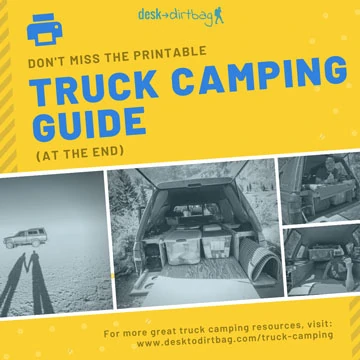
While both approaches certainly have their merits, they also have their drawbacks, making each more appropriate for certain types of travelers compared to others. While I can’t say which is best for you, you will hopefully have a better idea by the time you finish this truck camping video.
The video provides a clear description of each as well as demonstrating the approaches, but if you’re unable to watch the video right now, there is a written summary below.
Truck Bed Sleeping Platform Setups
After you’ve got your canopy picked out (see my previous post and video on canopy selection), your next step will be to build out the back in order to sleep and keep your truck camping gear organized.
I did a ton of research about truck camping builds in the months leading up to building out my truck and what I found is there are generally two approaches that people take.
Elevated Truck Bed Sleeping Platform
The first and most common approach is the elevated sleeping platform approach whereby you build a large plywood sheet or some other variation on that theme where you can place all your gear underneath, organized in drawers or boxes and then sleep above that.
The main advantages of this approach are the organized and dedicated gear storage space underneath the wood and the living area above. You can essentially just crawl in and go to bed. It also provides a more secure area, or at least an “out of sight, out of mind” approach to safeguard your gear from potential thieves in parking lots or trailheads.
The downsides to that approach are the lack of living space and lack of headroom. This approach is essentially only good for crawling in and going to sleep, as it provides no real space to hang out, pass the time, change clothes, etc.
You are essentially prioritizing gear storage over livability. Which is all fine and good. Most people believe they aren’t going to spend much time at camp or at their truck. But if you’re doing it for the longer term, you will definitely end up passing time in your truck, whether it be for sickness, laziness, weather, bugs, or whatever.
Most people that I’ve talked to or read about who have utilized this approach mention that they end up hating it. It is not much different from hanging out in a coffin. It is, on the other hand, a relatively easy approach, requiring you to cut but a few pieces of wood to fit the length of the bed, with no moving parts.
Backshelf Sleeping Approach
The second approach which is more favored by long term dirtbags and travelers is the backshelf approach whereby you essentially just lay a plywood sheet across the back of your canopy a few feet in width and place your gear on the shelf as you sleep, mattress on the bed of the truck, and feet underneath the platform.
There are variations of the approach that include side bins for organization or not, but the principle remains the same.
The advantages of this approach are the much more ample living room (at least compared to the elevated sleeping platform) in that you can sit up in the back of your canopy to watch movies, read a book, change clothes, etc. Tip: use your pillow as the back of your couch.
While the disadvantages to this approach are the smaller amount of dedicated gear storage space (essentially just the back shelf and the side bins), and you lose the “out of site, out of mind” protection offered by the sleeping platform with gear storage underneath.
You will also have to shuffle gear around more frequently with the backshelf approach–meaning from when you’re camping to when you’re driving you will have to place any heavy boxes or large items from the backshelf back down on the truck bed so they don’t fall.
It all depends on the amount of stuff you have (less is more!), but in my case, I keep the sleeping mat rolled up and have a dufflebag of clothes (between the two of us), two medium sized boxes for food, one small cooler, and one large box for misc. camping and backpacking gear.
The process when arriving at camp is place the two food boxes in the cab of the truck, the dufflebag on top of them, put the large gear box on the back shelf along with the cooler, and then unroll the sleeping pad. Reverse that process to leave camp, even to run errands or go to the trailhead.
This approach is simple but it is, perhaps, slightly more work to build out compared to the elevated truck bed sleeping platform since you may need to make more precise cuts to build out the side bins along the wheel wells.
Transformer Truck Bed Sleeping Platform
In the end, I decided to combine the best of both approaches with my transformer style sleeping pad which includes rails mounted on the side bins that allow me to move the sleeping platform up or down depending on what I’m looking for at that moment.
I will say that 9 times out of 10 I am sleeping in the truck in backshelf mode. It is, simply put, much more comfortable. But every once in a while I do love the convenience of the elevated sleeping platform, especially when it comes to more covert parking lot overnighters. We have even used it as a couple in the elevated sleeping platform and it performs just fine.
More often than not though, the reason to retain the dual approach is the ability to lock and secure my gear underneath whether at a trailhead, or parking it on the street in the city–always good to keep away prying eyes.
Coupled with the fact that I can lock my tailgate to my sleeping platform with the hinges and hasp locks, I provide a relative boost in security to most opportunist thieves. In either case, I sleep better knowing my gear is better protected than the car next to it.
So there you have it, the two primary approaches to truck camping sleep setups and the pros and cons of each approach.
I’m biased, of course, but I think the transformer style offers the best of the best and is what I would recommend to anyone considering building out the back of their truck.
Hope that’s helpful.
As always, if you have any questions at all about this truck camping life, sound off in the comments below or shoot me an email directly.
Read Next: My Favorite Truck Camping Gear
More truck camping stuff?
Join the private Facebook group Pickup Truck Camping to ask questions and share your insights.
- Pickup Truck Canopy Camping Frequently Asked Questions
- 1991 Toyota Pickup – An Ode to an Awesome Old Truck
- 7 Awesome Road Trip Products for Life on the Road
- What You Need to Get Started Camping in the Back of a Truck
- Comparing Roof Top Tents, Canopies, Slide-In Campers, and Truck Bed Tents
- Living in a Truck or How to Turn a Canopy into an RV
- Truck Camping Videos: A Full Library of Truck Camping In Action
- Truck Camping 101: Truck Bed Sleeping Platform vs. Back Shelf Approach
- Truck Camping Essentials: Why You Need a Dual Battery Setup
- 4 Crucial Considerations When Buying a Truck Canopy for Camping
- Truck Camping: Choosing a Sleeping Pad or Truck Bed Mattress
- 8 Biggest Mistakes People Make When Truck Bed Camping
- Pickup Truck Camping: A Guide to Outfitting and Living in the Back of Your Rig
- How to Build the Ultimate DIY Truck Bed Camper Setup: Step by Step Directions
Share This
Did you enjoy this post on the best truck bed sleeping platform? Take a second to share it on Facebook, Pinterest, or Twitter. Thanks!

Pickup Truck Camping Guide
Turn your pickup truck into the ultimate adventure mobile. This printable truck camping guide will help you through the process.
Tools
Essential Truck Camping Gear
- Teton Sports Foam Sleeping Pad
- 15 Degree Down Sleeping Bag
- Two Burner Coleman Stove
- Aeropress Coffee Maker
- Hard-Sided Water Container
- Collapsible Camp Chair
- 800W Power Inverter
- Cooler for Food Storage
Road Trip Essentials
Instructions
- Get a truck if you don't have one! 🙂 I've traveled all over the world in my 1991 Toyota Pickup. The bigger the truck bed the better. Short beds have workarounds but they are not ideal unless you are quite small.
- Find a new or used canopy for your truck. Read this guide on what to look for when buying a canopy. My top recommendation is to find an elevated canopy like the Leer 122 (what I use).
- Decide on what sort of truck bed sleeping platform you want to build. The two most common are an elevated sleeping platform or the backshelf (and side-shelf) approaches. I did a transformer setup for the best of both worlds, here is my step-by-step guide building the transformer style setup.
- Purchase essential gear to start truck camping which includes a sleeping pad or mattress, sleeping bag, two-burner stove, cooler, storage boxes, etc.
- Go on a test truck camping run at a free boondocking campsite without amenities to test your setup. Read more about finding free camping in the USA.
- Consider your electronics system and how you will charge devices while on the road. You could get an outside system like the GoalZero Yeti but I recommend using a dual battery and isolator under the hood.
- Join the Pickup Truck Camping group on Facebook for an amazing, like-minded community where you can ask questions and get answers from experienced truck campers. Be sure to pick up your #PTC stickers, shirts, and swag!
- Review the detailed truck camping gear and accessories (plus a packing list) and start planning your epic truck camping adventures. Might I suggest this national park road trip, the most scenic drives in the USA, or this west coast USA road trip? Here is more info on road trip planning for you, based on 10s of thousands of miles of adventures.
- Sign up for more truck camping tips, tricks, and info delivered straight to your email inbox from yours truly.
Notes
I hope this helped you get started with truck camping! I know it can be confusing when you are just getting started, which is why I started writing so extensively about it.
If you have any questions about truck camping, road trips, budget travel, or anything else shoot me an email at ryan@desktodirtbag.com.
(I love getting questions! That is how I get ideas for my blog posts and what to write about!)
Recommended Products
As an Amazon Associate and member of other affiliate programs, I earn from qualifying purchases.
Ryan
Latest posts by Ryan (see all)
- Kazakhstan Food: Exploring Some of its Most Delicious Dishes - August 7, 2023
- A Self-Guided Tour of Kennedy Space Center: 1-Day Itinerary - August 2, 2022
- Fairfield by Marriott Medellin Sabaneta: Affordable and Upscale - July 25, 2022
- One of the Coolest Places to Stay in Clarksdale MS: Travelers Hotel - June 14, 2022
- Space 220 Restaurant: Out-of-This-World Dining at Disney’s EPCOT - May 31, 2022

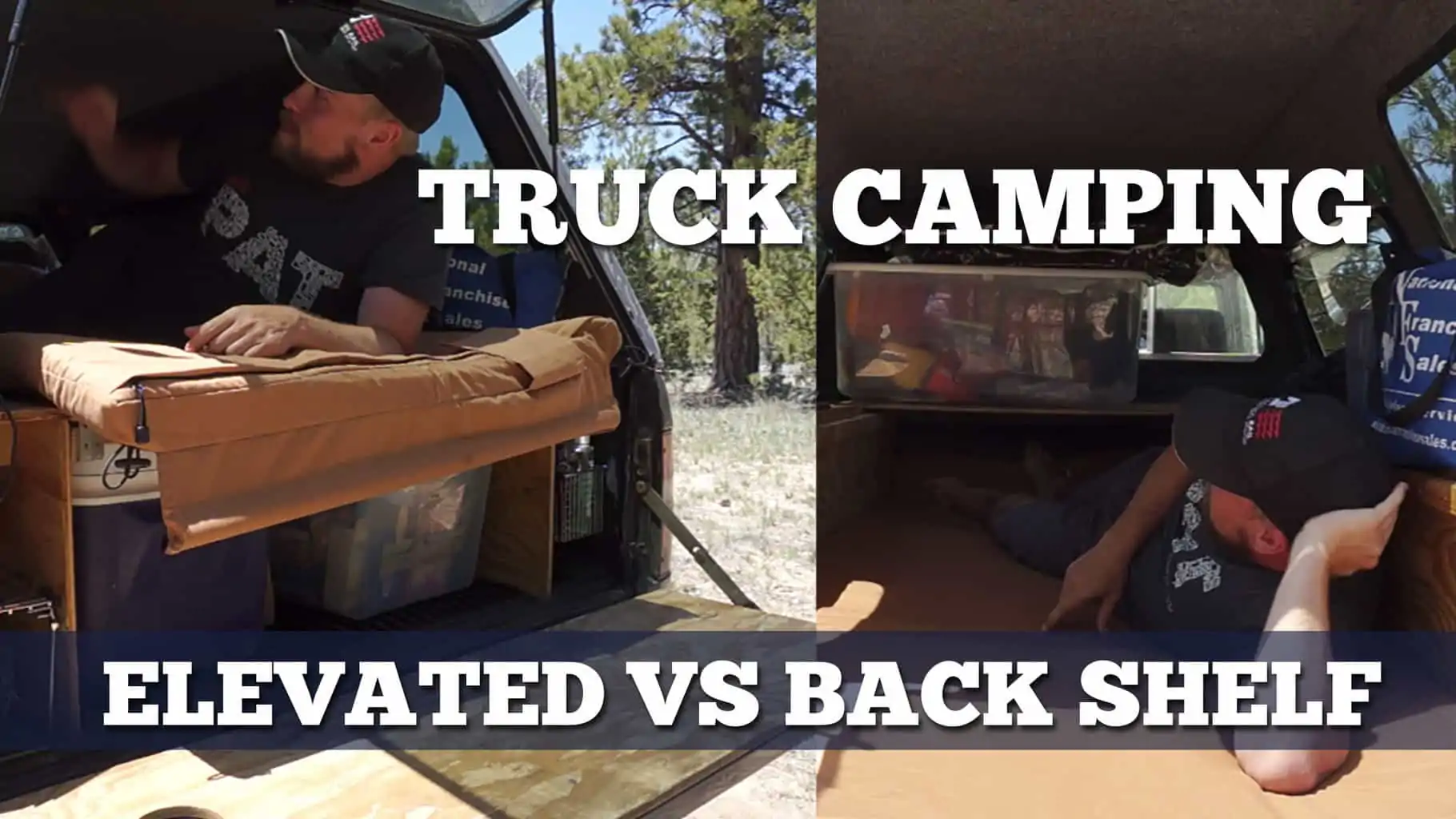
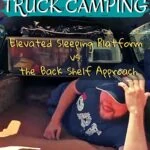
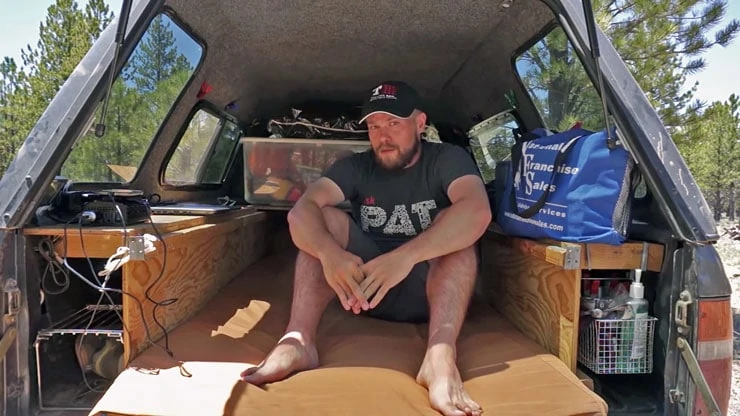
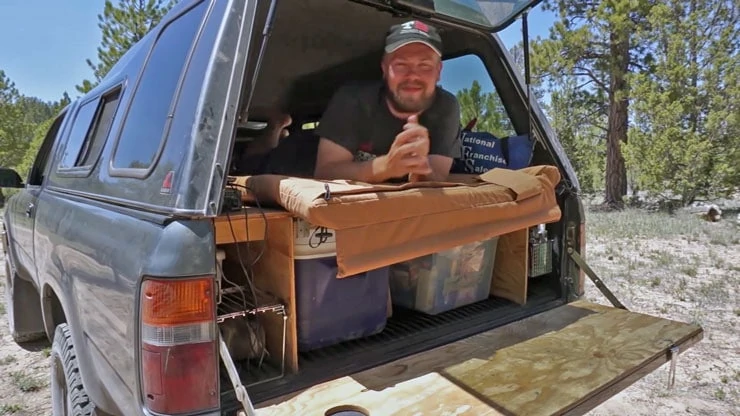
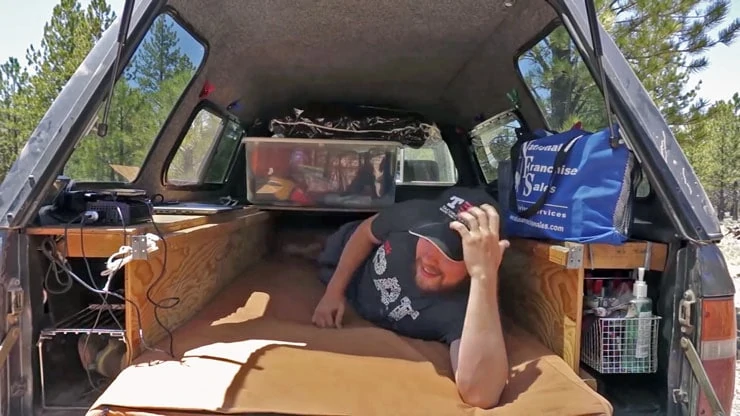
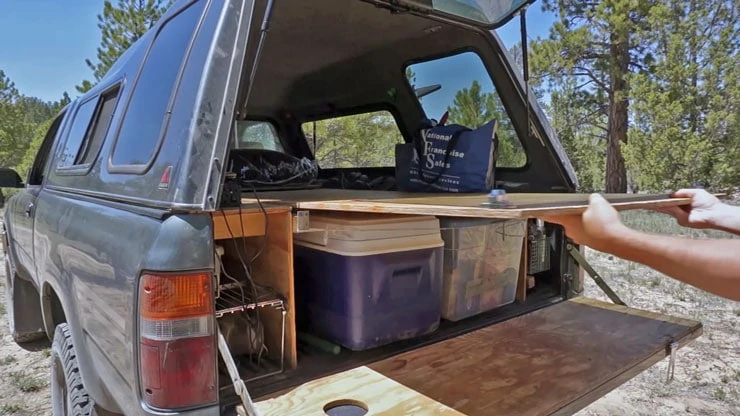
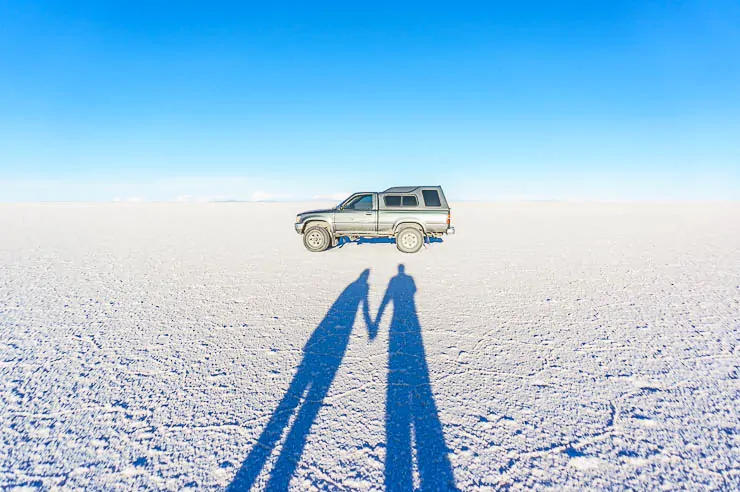

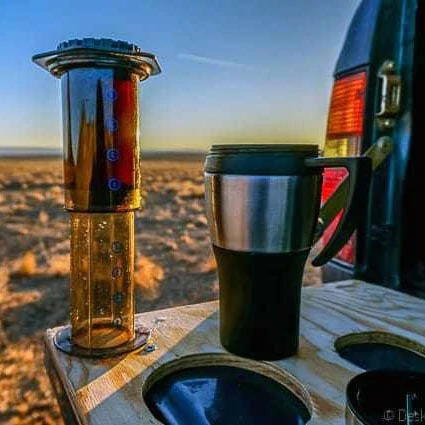
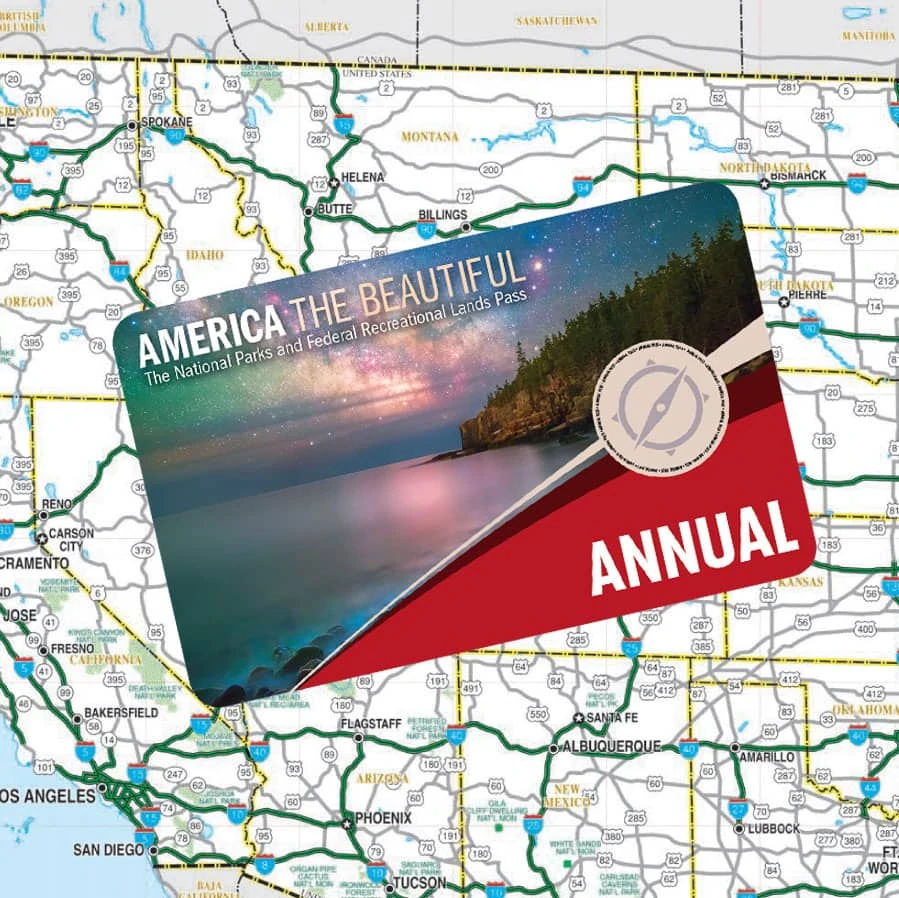
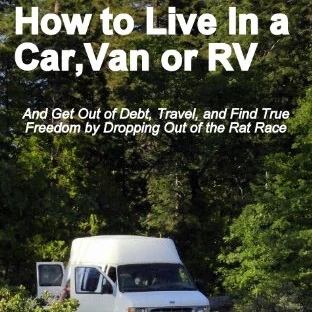
Comments 1
Just a comment on the van/truck question. I’ve done both. In fact I’ve done pickups/SUV and Van.
Trucks give you the options of the bulletproof Toyota’s and 4 WD – two big pluses. Van’s give you MUCH more space and with a limited slip differential pretty good off-road capability. Nothing like you get with a pickup but for the vast majority of sites – it’s fine.
For now with my two big dogs and girlfriend I’m sticking with a full size Chevy/GMC van which has been quite reliable and if I need less space (and have the money 🙂 – they are quite a bit more expensive – I will look to the pickups.